Svengali (1931) and Svengali (1954)
By Toronto Film Society on April 23, 2020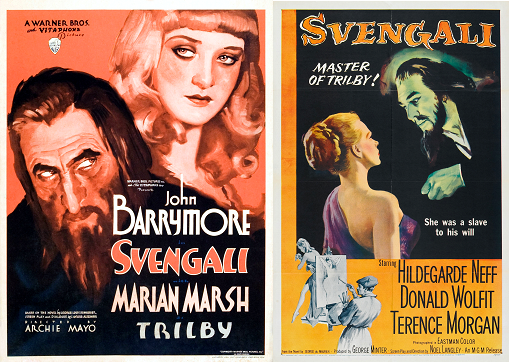
Toronto Film Society presented Svengali (1931) on Monday, January 11, 1982 in a double bill with Svengali (1954) as part of the Season 34 Monday Evening Film Buffs Series “B”, Programme 6.
Svengali (1931)
Production Company: Warner Brothers. Director: Archie Mayo. Adaptation and Dialogue: J. Grubb Alexander. Photography: Barney McGill.
Cast: John Barrymore (Svengali), Marion March (Trilby), Bramwell Fletcher (Little Billee), Lumsden Hare (Taffy), Donald Crisp (The Laird), Carmel Myers (Honori), Luis Alberni (Gecko), Ferike Boros (Marta), Andrienne D’Ambricourt (Mme Vinard), Yola D’Avril (Maid), Paul Porcasi (Concert Manager).
Svengali (1954)
Distributor: Renown (GB), MGM (US). Production Company: Alderdale Films. Producer: George Minter. Associate Producer: Douglas Pierce. Director: Noel Langley. Screenplay: Noel Langley, from the novel Trilby by George du Maurier. Photography: Wilkie Cooper. Editor: John Pomeroy. Music: William Alwyn. Art Director: Fred Pusey. Costumes: Beatrice Dawson. Songs sung by: Elisabeth Schwartzkopf.
Cast: Hildegard Neff (Trilby), Donald Wolfit (Svengali), Terence Morgan (Billy), Derek Bond (The Laird), Paul Rogers (Taffy), David Kossoff (Gecko), Hubert Gregg (Durien), Noel Purcell (Patrick O’Ferrel), Alfie Bass (Carrel), HarrySecombe (Barizel), Peter Illing (Police Inspector), Joan Haythorne (Mrs. Bagot), Hugh Cross (Dubose), David Oxley (Dodor), Richard Pearson (Lambert), Toots Pound (Mama Martin).
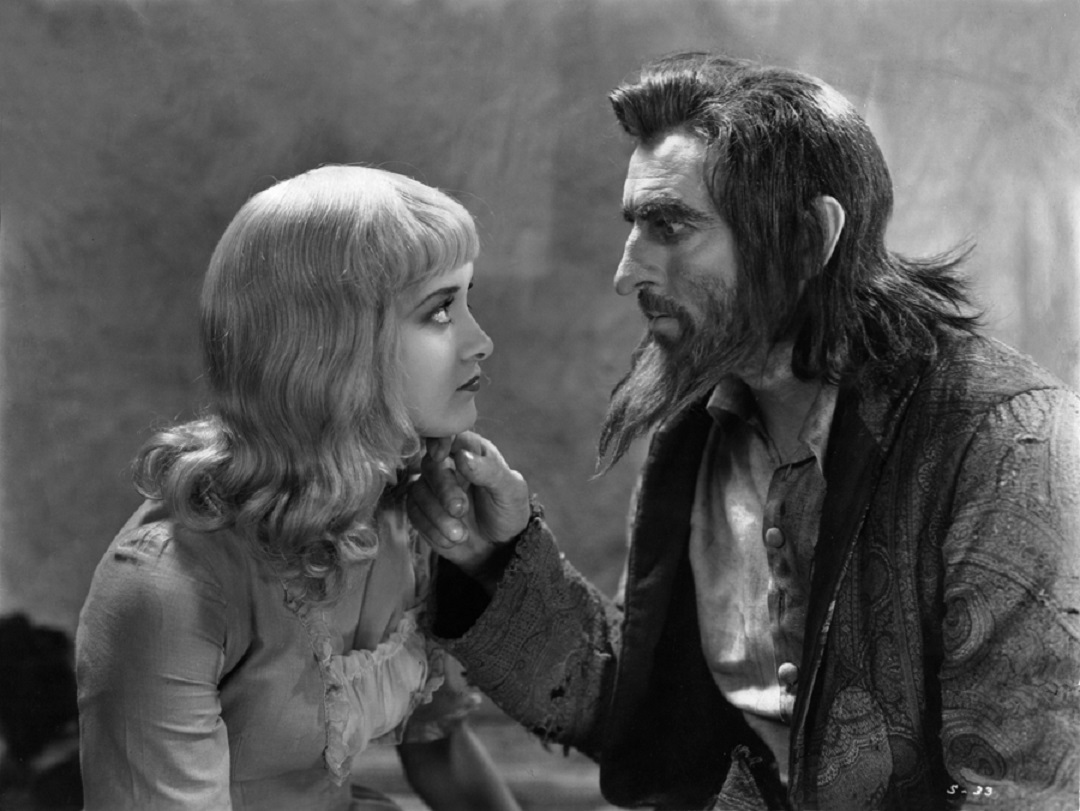
The aaptation of a novel for a film almost always sacrifices some aspects of the original. The basic story of George du Maurier’s Trilby has been used on stage as well as having been adapted six times for film. All of these have modified aspects of du Maurier’s story. At the same time, the kind of richly romantic melodrama that du Maurier wrote doesn’t really lend itself to much in the way of serious analysis. The story involves the pretty but untalented Trilby, who becomes a great singer under the hypnotic control of Svengali. Even in 1931 Variety was concerned about the acceptability of hypnosis to audiences of that day. The same concern was raised around the 1954 version. It is unlikely that a 1982 audience will find hypnotic control any more plausible. The success of the narrative has always depended on the willing suspension of disbelief on the part of the reader or viewer. However, it seems that audiences have typically been willing to grant that suspension of disbelief and have found the story a source of rich rewards.
George du Maurier entitled hs novel Trilby, making the central character of the story the title character. This title was retained int he silent adaptations, but the 1931 film was entitled Svengali, reflecting a recasting of the story. The 1931 film not simply modified things from the book but reconceptualized it in such a way that Svengali is indeed the central character. Barrymore’s performance as Svengali seemed to so perfectly embody the character that more than two decades were to pass before another adaptation of Trilby was to be attempted.
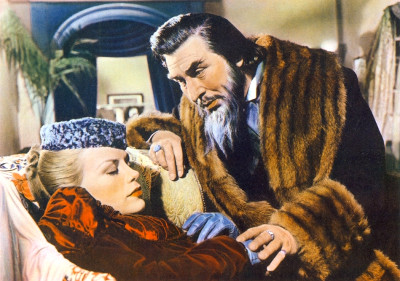
The 1954 adaptation recasts the story back to having Trilby as the central character with Hildegarde Neff in the role. The English title of the film and the title under which it opened in New York was Svengali, but in an attempt to move it outside of what Variety referred to as “arty houses” and to gain a broader audience it was later distributed under the title of Trilby. The 1954 version is very much a romantic melodrama. However, the central role of Trilby was not cast with an orthodox “romantic” leading lady but rather with Hildegarde Neff who was a German actress described by contemporary critics as “that great cow of a woman,” a phrase that was intended as a compliment.
In 1931, Variety accurately noted that even though Warner Brothers wanted to be a major launching point for Marion Marsh, John Barrymore as Svengali so dominated the film that most audiences left the theatre remembering only him and his performance. In the 1954 version, the role of Svengali seems to have been viewed with less importance; originally cast with Robert Newton who was an experienced film actor, when he left the picture before filming began he was replaced by Donald Wolfit who was an experienced actor on the stage but a relative unknown to film.
It isn’t really a question of which film is faithful to the book, because neither is. The 1931 version presents the story much more from Svengali’s role, while the 1954 version reflects much more on Trilby’s role, but neither version reflects much more of du Maurier’s novel than the central plot device whereby Trilby under the hypnotic control of Svengali gains the voice of an angel.
References: An Illustrated History of the Horror Film by Carlos Clarens, 1967;
Karloff and Company: The Horror Film by Robert F. MOss, 1973;
New York Times, 1 May 1931 and 26 September 1955;
Variety, 6 May 1931 and 5 January 1955;
Monthly Film Bulletin, February 1955.
Research by Helen Arthurs. Notes by Marcia Gillespie and Lloyd Gordon Ward
You may also like...
-
News

Frances Blau
Toronto Film Society | February 27, 2024On Monday, February 26th, 2024, Toronto Film Society lost longtime friend, supporter, and board member Frances Blau. Known for her sense of humour, her love of film, her generosity,...
-
Special Events

Arsenic and Old Lace (1944) at the Paradise Theatre
Toronto Film Society | April 21, 2024Toronto Film Society presents Arsenic and Old Lace (1944) at the Paradise Theatre on Sunday, May 5, 2024 at 2:30 p.m. Screwball comedy meets the macabre in one of...
Programming

Virtual Saturday Night at the Movies
Toronto Film Society | April 11, 2024Toronto Film Society is back in the theatre! However, we’re still pleased to continue to bring you films straight to your home! Beginning Season 73 until now we have...
4-
 Toronto Film Society | April 21, 2024
Toronto Film Society | April 21, 2024
-
 Toronto Film Society | November 6, 2022
Toronto Film Society | November 6, 2022
-
 Toronto Film Society | August 1, 2023
Toronto Film Society | August 1, 2023
Donate to Toronto Film Society – We’re now a Registered Charity!
-
Copyright © 2017 Toronto Film Society.

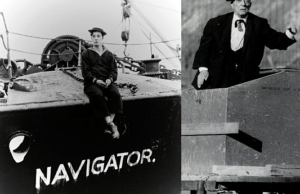
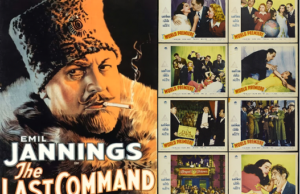
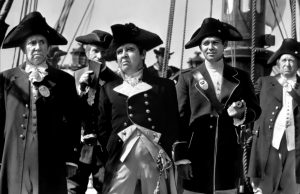
Leave a Reply